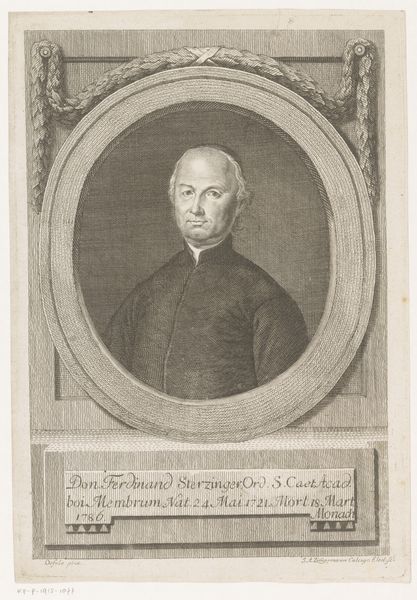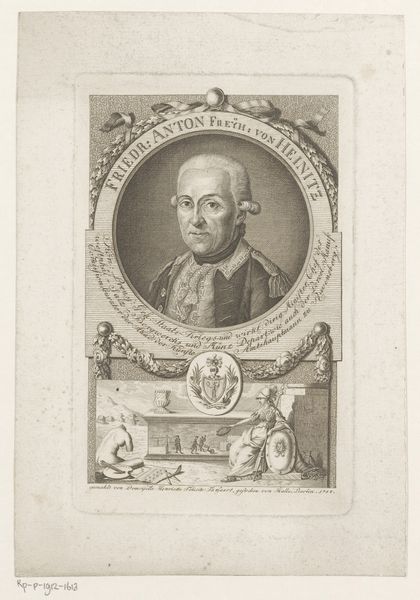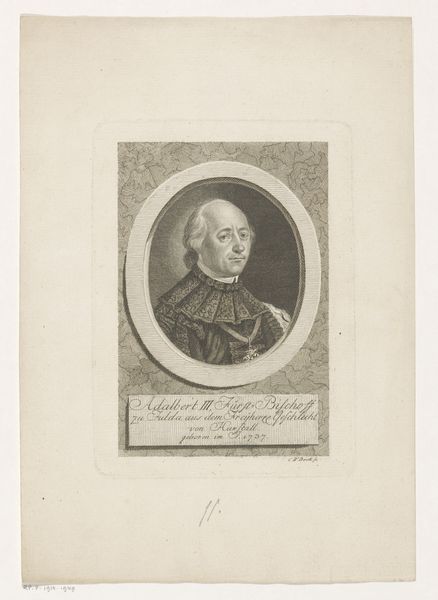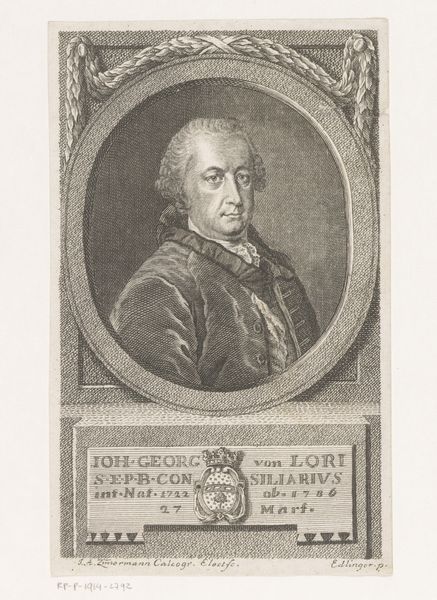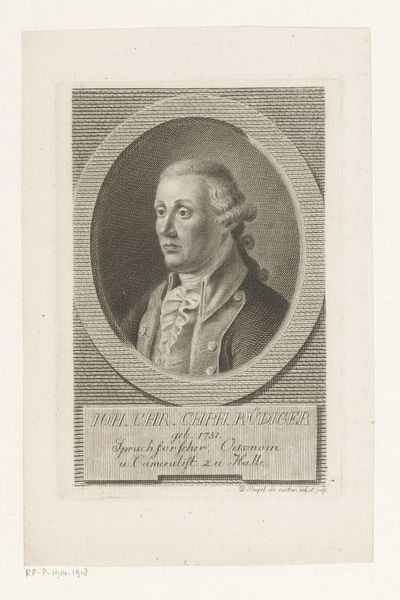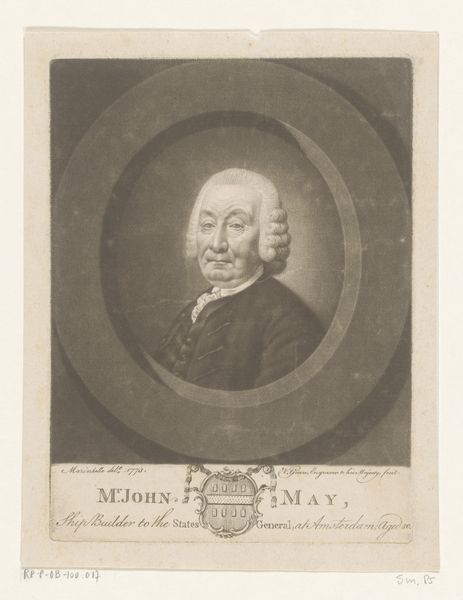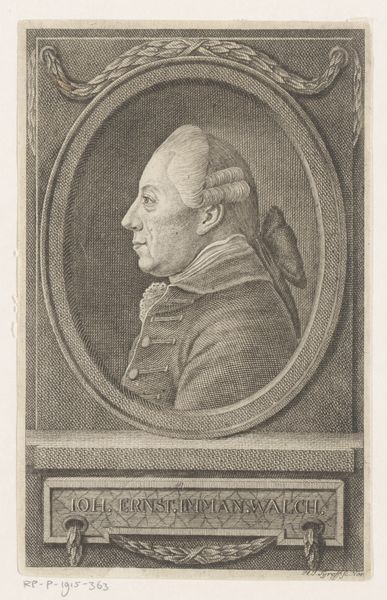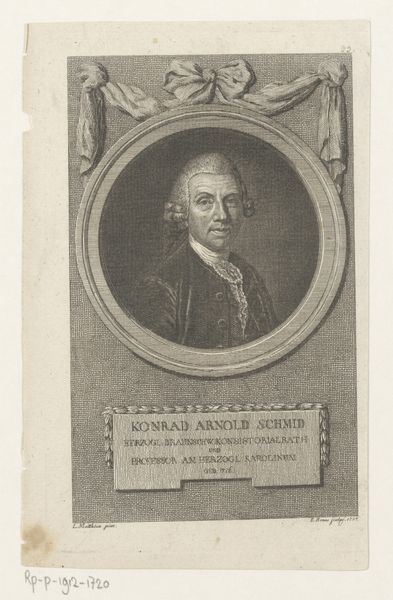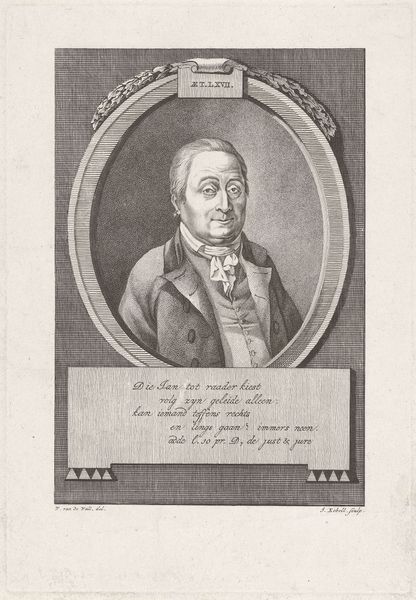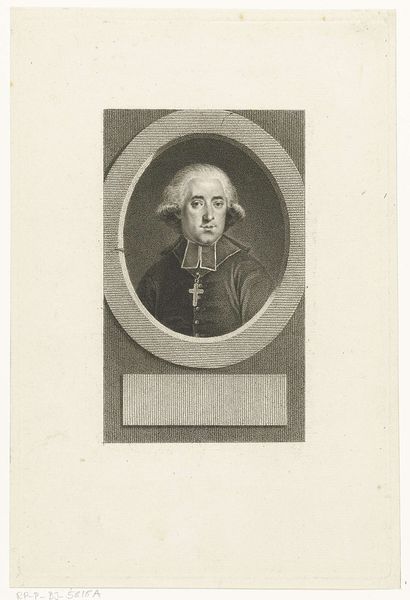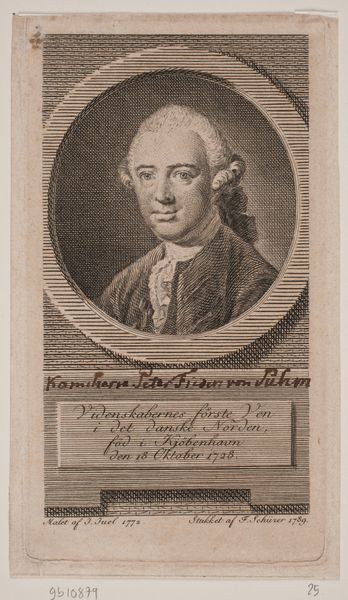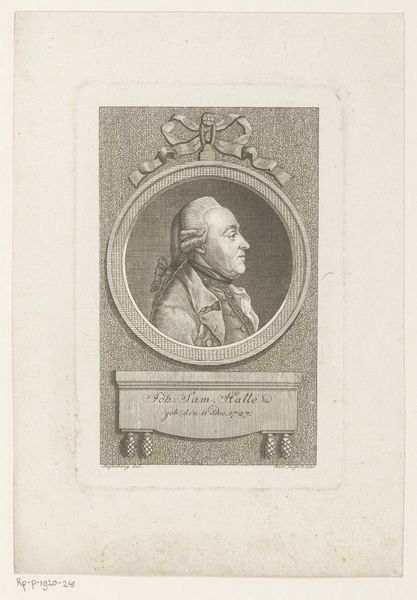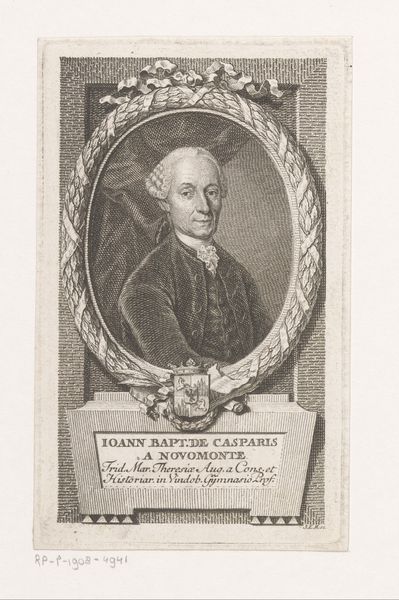
print, etching, engraving
#
portrait
#
neoclacissism
# print
#
etching
#
pencil drawing
#
engraving
Dimensions: height 167 mm, width 108 mm
Copyright: Rijks Museum: Open Domain
Daniel Beyel created this portrait of Nicolaus Anton Johan Kirchhoff using engraving, a printmaking technique, sometime between the late 18th and early 19th centuries. Engraving is an intaglio process, which involves cutting lines into a metal plate. This is skilled, specialized labor. The engraver uses a tool called a burin to carve the image, and the depth and spacing of these lines determine the tones and textures of the final print. The precision and detail seen here would have required a high level of craftsmanship. Note the fine lines that define Kirchhoff’s features and clothing, and the way Beyel used hatching and cross-hatching to create areas of shadow and light. Once the engraving was complete, the plate would have been inked and then pressed onto paper to create the print. What makes this print interesting is the labor involved in its production. From the mining of the metal for the plate to the skilled work of the engraver and the operation of the printing press, the entire process reflects the modes of production in which objects and artworks were created.
Comments
No comments
Be the first to comment and join the conversation on the ultimate creative platform.
